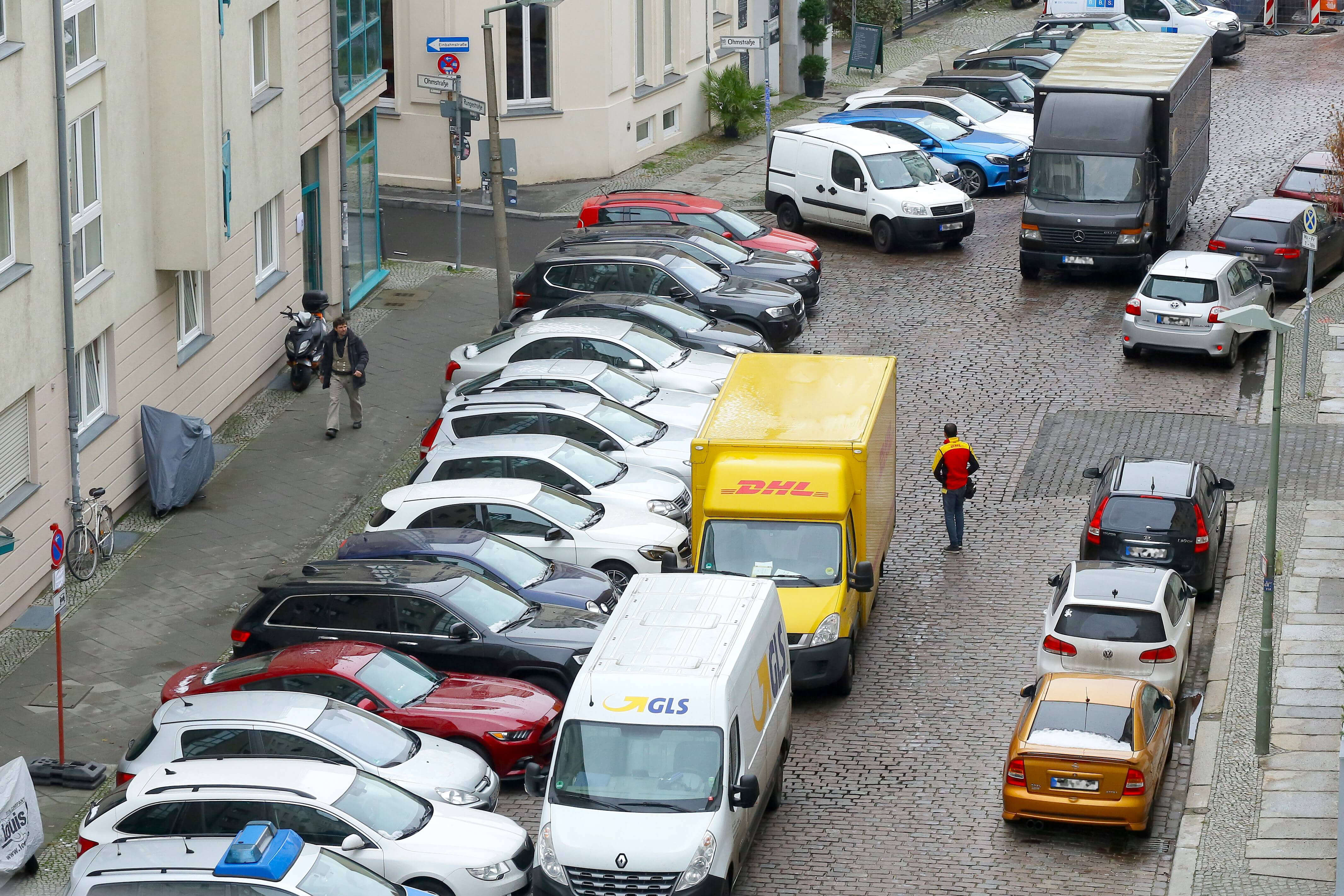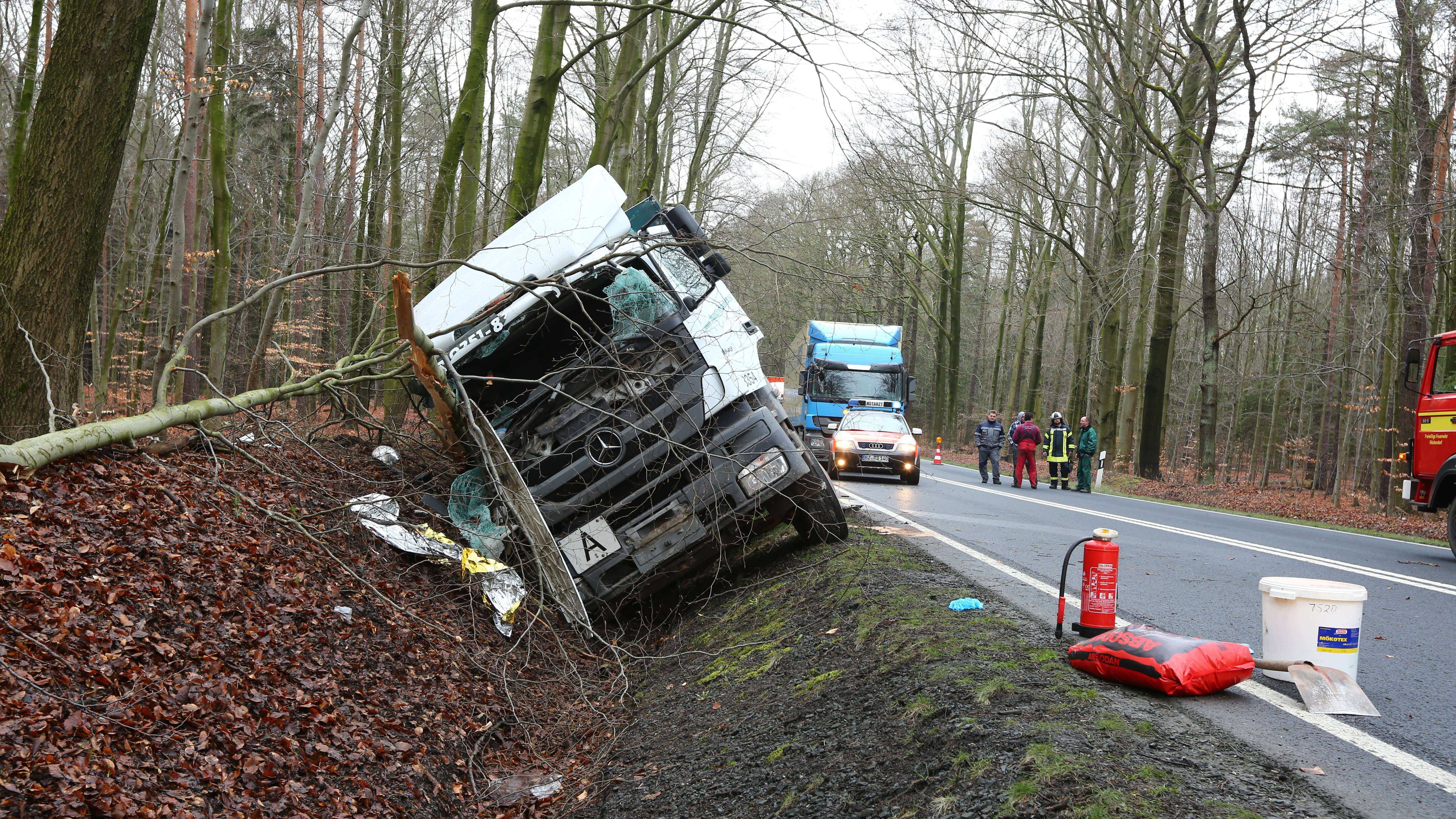Safe Roads in Urban and Non-Urban Areas
In addition to vehicle systems, infrastructure plays a critical role in increasing road safety. Upgrading or maintaining roads is only one of many aspects involved. New mobility concepts such as long trucks, overhead-line systems, city logistics vehicles with electric drives and cargo bikes also need to be given greater consideration in the future.
The past and projected increase in the volume of goods transportation by road with the simultaneous increase in the overall volume of traffic, ecological aspects, limitations on the labor market and, last but not least, questions regarding safety make it necessary to further optimize the use of existing infrastructures. This includes better connectivity among different modes of transport. However, new concepts relating to vehicles are also required. The electrification of the power train, overhead-line systems such as the eHighway, improved vehicle-to-vehicle communication through to platooning, approval for longer combination vehicles, higher maximum authorized masses as well as optimization measures for combined transport and loading vehicles onto trains are just a few examples that are being discussed or are already being tested.
Changes to vehicle technology or provisions concerning authorization always need to be considered against the backdrop of whether the infrastructure is even equipped to handle these concepts. Increased mass means higher loads on roads and especially bridges. When braking on bridges, truck platoons generate enormous amounts of energy, while more combined transport operations need to be processed by freight handling stations and railroad companies competitively and in line with requirements.
This also raises a host of new safety questions. What risks are posed by overhead cable posts erected on the roadside to vehicle occupants who leave the road in an accident? What are the limitations of existing safety guards such as guard railings or concrete safety barriers in the event that they are hit by heavier, longer or faster commercial vehicles? What are the consequences of the increased load of a longer combination vehicle in the event of a fire in a tunnel or under a bridge?
Extensive studies on longer commercial combination vehicles
The topic of heavier or longer combination vehicles is already resulting in some highly controversial discussions in many countries around the world. Longer combination vehicles (LCV) were approved in the Canadian province of Alberta back in 1969. LCVs are vehicles that are longer than 25 meters. The maximum length is 41 meters for vehicles with a generally applicable maximum authorized mass of around 64 metric tons in Canada. Since then, LCVs have been authorized in several other provinces.
In the mid-1980s, the first studies on LCVs were conducted in the USA, with more studies to follow. Today, LCVs are authorized in a number of federal states. SpeciFications apply to the length of the load carrier and the combination options. Two semi-trailers, a semi-trailer with a trailer and three trailers are authorized. The addition of a tow bar and semi-trailer tractor results in a total length of up to 38 meters and a maximum mass of up to 62.5 tons.
“Road trains” with a total length of up to 53.5 meters and a maximum mass of 132 metric tons (excluding semi-trailer tractor) are used on some long-haul routes in Australia.
The situation in Europe is also far from uniform. The maximum standard length is 18.75 meters. Long truck combinations up to a length of 25.25 meters are authorized in some countries, mostly on a route-by-route basis. Combinations up to 32.5 meters long are permitted in Sweden. Very different regulations also apply to maximum authorized masses of 40 to 90 tons.
The most extensive research work regarding longer truck combinations was conducted by the German federal government under the leadership of the Federal Ministry of Transport from January 1, 2012, to December 31, 2016. The Federal Highway Research Institute provided academic support with regard to the field test. The investigations covered the fields of vehicle technology and the environment, loads on roads, tunnel safety, traffc issues, psychological aspects as well as accidents and other exceptional occurrences.
The field test therefore represents the most comprehensive body of research on this topic. It is a successful example of how insights into “new” concepts can be gained independently. Since no notable problems were identified, it was decided to authorize the operation of long trucks up to a maximum length of 25.25 meters and a maximum authorized mass of 44 metric tons (which was the same as previously) on certain routes. A number of conditions apply, including a high safety level for the vehicles involved and the option for vehicles to be used in combined transport.

